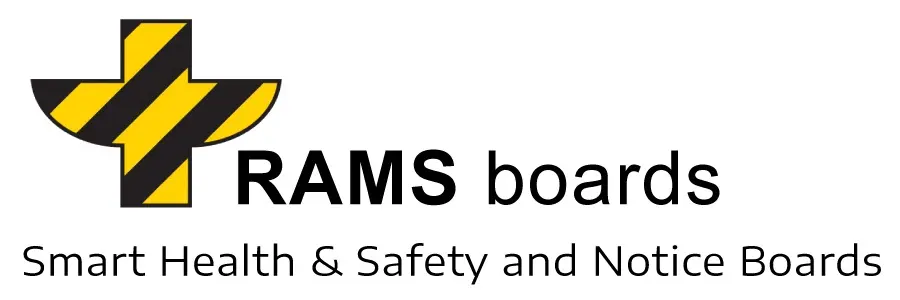The Need for Site Safety Boards
In industries like construction, manufacturing, and logistics, where hazards are part of daily operations, safety is paramount. Effective communication of safety protocols, emergency procedures, and hazard warnings can mean the difference between life and death. Site managers and Environmental Health & Safety (EHS) managers are tasked with ensuring that workers remain informed and compliant with both internal and regulatory safety standards. However, achieving this goal often proves challenging due to poor or inconsistent communication tools.
Many traditional safety boards fail in their purpose. Hand-constructed boards made from timber and plywood deteriorate quickly under harsh weather conditions, often resulting in unreadable or damaged information displays.
Additionally, because these boards are cumbersome and lack standardization, they are difficult to relocate, often leading site managers to abandon them altogether. This scenario creates a dangerous gap in workplace safety communication.
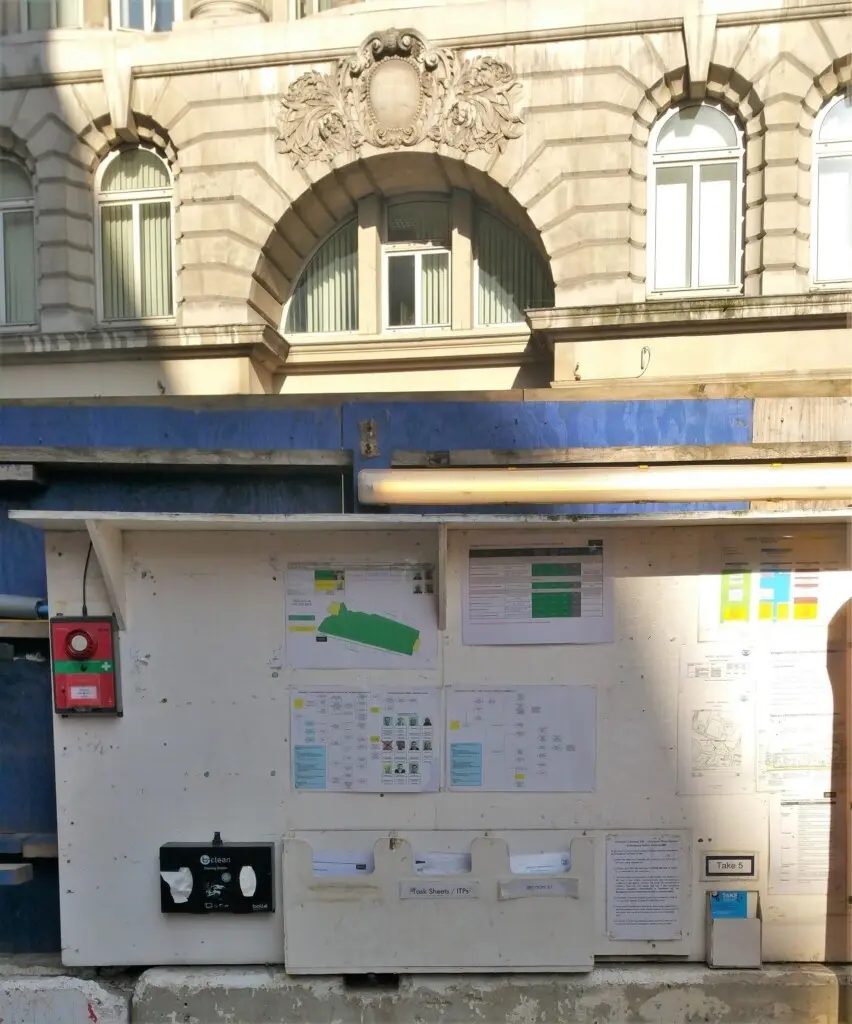
Modern solutions such as modular site safety boards have transformed the way safety information is delivered. RAMS Boards, a manufacturer specializing in modular information boards, has designed its products to meet the unique needs of high-risk industries.
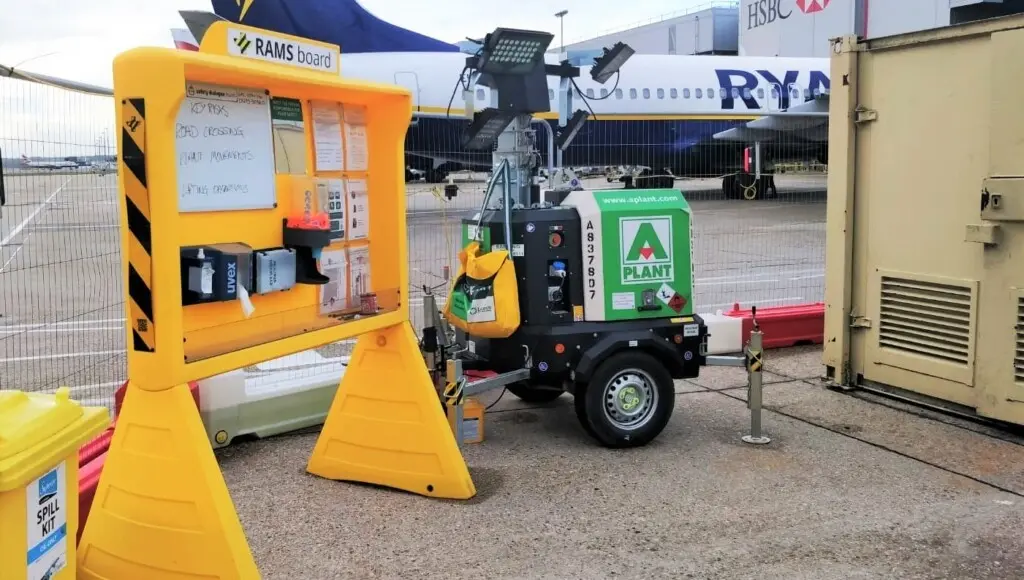
These boards are durable, easy to transport, and capable of integrating multiple safety features, including document holders, emergency notices, and site-specific safety instructions
In this way, they provide a centralized, highly visible point for safety communication, making compliance and awareness more achievable than ever before.
Key Players in the Safety Signage Industry
The safety signage market is diverse, with various companies offering solutions tailored to different environments. Each provider focuses on enhancing workplace safety communication, though their approaches vary in design and features:
| Provider | Specialization |
|---|---|
| First Safety Signs | Customizable safety boards tailored to construction site requirements. |
| SafetyBuyer | Boards emphasizing emergency procedures and regulatory compliance for high-risk sites. |
| Safety Signs 4 Less | Comprehensive display solutions, including hazard warnings and compliance signage. |
| CMT | Posters and signs designed to reinforce site policies and health and safety guidelines. |
| Seton | Centralized safety points to improve safety communication in industrial workplaces. |
| RAMS Boards | Modular, multifunctional boards made of HDPE, serving as integrated safety stations. |
These companies play a crucial role in helping site managers maintain a safe working environment by ensuring that essential safety information is always accessible and up to date.
RAMS Boards: A Game-Changer in Safety Communication
RAMS Boards has emerged as an industry leader by addressing several critical challenges faced by site and EHS managers. Unlike traditional safety boards, RAMS Boards are designed with modularity, durability, and versatility in mind. Constructed from high-density polyethylene (HDPE), these boards are lightweight yet robust, capable of withstanding harsh environmental conditions without significant wear and tear. This makes them ideal for outdoor use on construction and industrial sites.
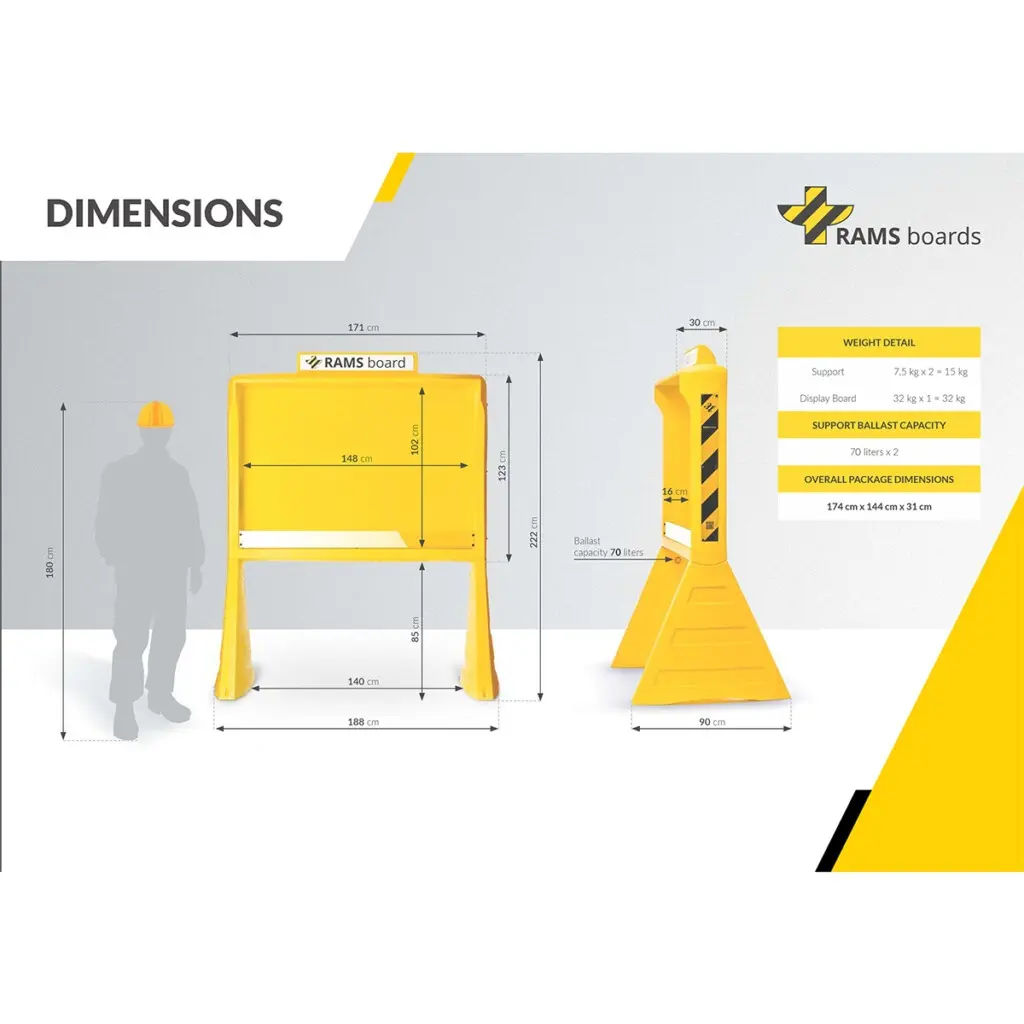
The modular design of RAMS Boards allows for multiple configurations. The system consists of three core components: the main board and two support structures, which can be filled with ballast for stability. When necessary, the board can also be wall-mounted, giving site managers flexibility to adapt the board’s placement to different environments. Each RAMS Board can be transported and assembled by two operatives, ensuring compliance with Health and Safety Executive (HSE) guidelines on manual handling. This ease of relocation allows site managers to move the board to new locations as site activities progress, enhancing both accessibility and visibility.
What truly sets RAMS Boards apart is their ability to integrate various safety communication tools in one central location.
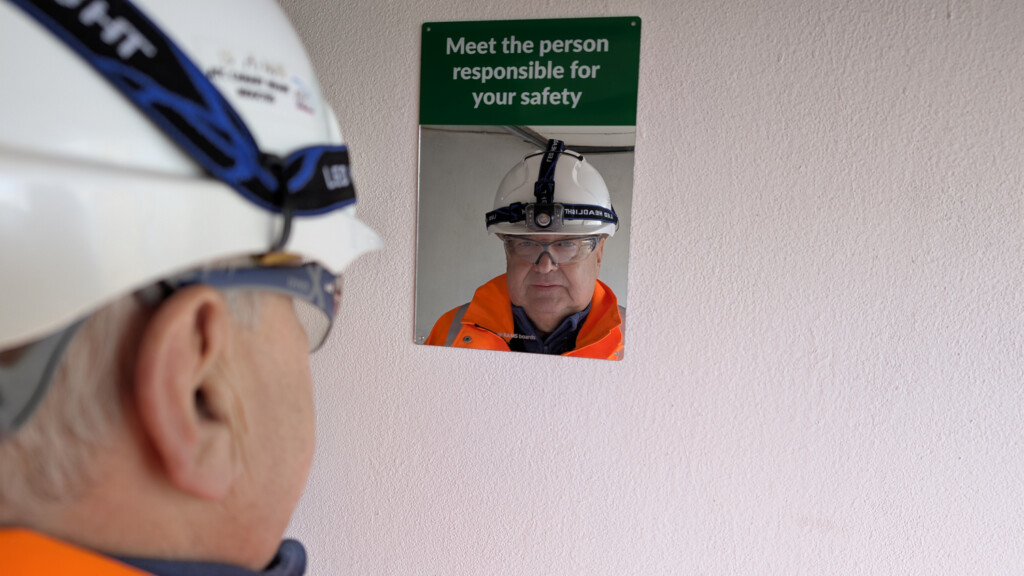
These boards include magnetic whiteboards for updating information regularly, transparent document pockets for storing risk assessments, and even a built-in mirror that prompts workers to “Meet the person responsible for your safety”—a subtle but powerful reminder of personal accountability on site.
This all-in-one functionality significantly improves the efficiency of safety communication, helping site managers maintain compliance with regulatory standards.
By incorporating recycled materials, RAMS Boards also support sustainability goals, a growing concern in today’s industrial landscape. Their reusability further reduces long-term costs, offering both economic and environmental benefits that traditional plywood-based boards cannot match.
Customization for Industry-Specific Needs
Every work environment presents unique risks, and safety boards must reflect these differences to be effective. One-size-fits-all solutions often fail to address the nuances of different industries, leading to communication breakdowns. RAMS Boards and similar customizable products fill this gap by allowing companies to tailor their boards to specific needs.
In the construction sector, for example, site safety boards often need to display high-priority information such as emergency procedures, contact details for first responders, and hazard warnings related to heavy machinery or structural instability. RAMS Boards provide ample space and document protection for this critical information, ensuring it remains legible and organized. Meanwhile, industrial settings may require more emphasis on hazardous materials protocols and equipment maintenance schedules, which can also be easily accommodated.
Providers like First Safety Signs, Seton, and Safety Signs 4 Less similarly offer customized solutions for their clients. These include the option to feature company logos, project-specific graphics, and tailored document holders. By adapting safety communication to site-specific needs, these boards promote a proactive safety culture and reduce the likelihood of accidents or non-compliance penalties.
Customization extends beyond physical features. Boards can also be equipped with technology such as QR codes or NFC tags that link to digital documents, allowing workers to access detailed safety procedures directly from their smartphones. This integration of physical and digital communication is becoming increasingly popular in workplaces seeking to modernize their health and safety protocols.
The ability to customize safety boards makes them indispensable tools for compliance, especially in industries where risk levels fluctuate based on project phases or seasonal changes. For site managers, this adaptability ensures that their teams remain informed, protected, and compliant, no matter the conditions.
Safety Communication and Compliance
In high-risk industries, clear and consistent communication of safety procedures is a cornerstone of regulatory compliance. Site managers and EHS managers are responsible for ensuring that all personnel are aware of workplace hazards, emergency protocols, and ongoing safety requirements. This responsibility is not only a legal obligation but also a key factor in reducing workplace accidents.
Safety boards play a crucial role in meeting these compliance requirements. Regulatory bodies, such as the UK Health and Safety Executive (HSE), mandate that risk assessments, method statements, and emergency plans are readily accessible to workers. RAMS Boards and similar solutions help companies meet these mandates by providing a dedicated space to display these documents. The boards include transparent pockets that protect paper documents from weather damage, ensuring that critical information remains visible and legible at all times.
Additionally, RAMS Boards’ magnetic whiteboard feature enables site managers to post real-time updates. Construction sites, in particular, are dynamic environments where hazards can change daily due to factors such as weather, equipment usage, or project progress. By regularly updating safety notices, site teams can stay informed about evolving risks, thereby reducing the chances of accidents.
Compliance also extends to emergency preparedness. Safety boards serve as centralized hubs where workers can quickly find essential information during emergencies, such as fire evacuation routes and emergency contact numbers. RAMS Boards can be equipped with fire safety points, eye wash stations, and emergency alarms to further enhance on-site safety. These features are particularly valuable in industries where immediate response to incidents is critical for minimizing harm.
Beyond regulatory compliance, safety communication tools contribute to fostering a culture of safety awareness. Workers who see regularly updated, well-maintained safety boards are more likely to engage with the information displayed. This proactive engagement can lead to improved adherence to safety protocols and a reduction in incidents caused by human error. Companies that invest in comprehensive safety communication infrastructure often report lower accident rates and higher productivity due to fewer disruptions from safety violations or inspections.
Product Integration: More Than Just a Display Board
Modern safety boards have evolved far beyond static information displays. Products like RAMS Boards are designed to act as multifunctional safety management points, integrating various tools and information that site managers need to keep their teams safe and compliant. This integration helps streamline operations by consolidating multiple safety functions into a single, highly visible location.
One key aspect of integration is the ability to combine document storage with live updates. For example, site managers can use the transparent pockets to store critical documents, such as risk assessments, while using the magnetic whiteboard to post new safety announcements. This ensures that both long-term and immediate safety information is available at a glance. By clearly segregating different types of information, RAMS Boards prevent confusion and make it easier for workers to quickly find what they need.
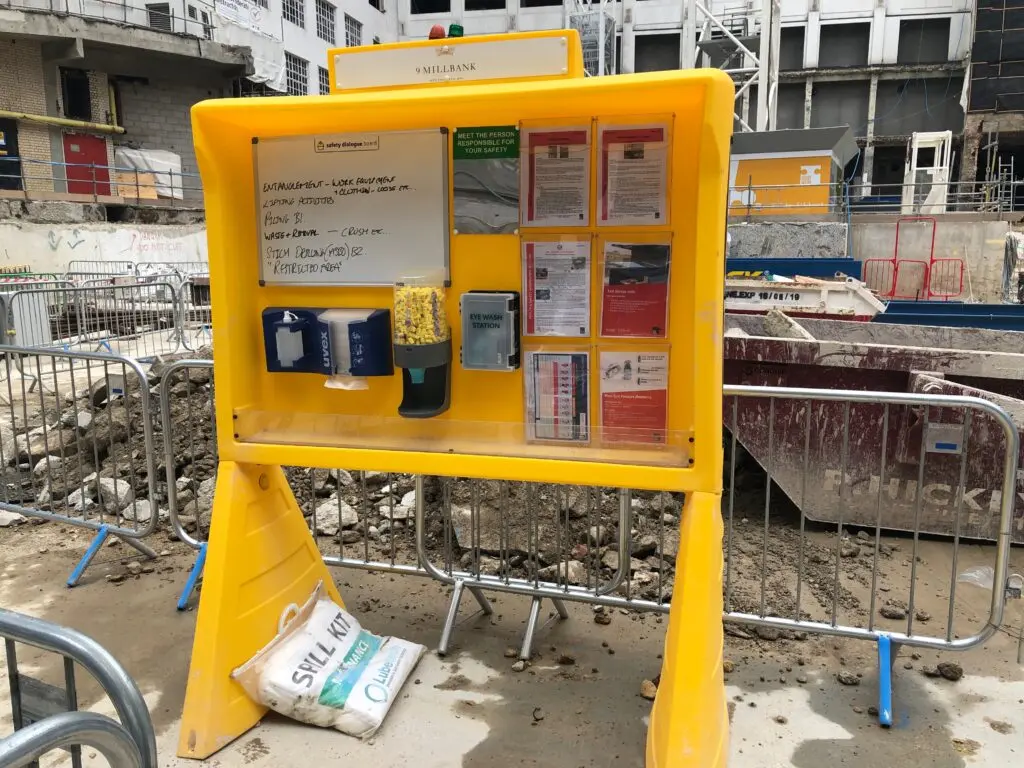
RAMS Boards also support the integration of safety equipment. Depending on the configuration, boards can include features such as fire extinguisher stands, eye wash stations, and earplug dispensers. This turns the safety board into a central hub where workers can access both information and protective equipment without having to search multiple locations on site. This level of convenience improves compliance by encouraging workers to consistently follow safety protocols.
Technological integration is another emerging trend. Many companies are incorporating digital features such as QR codes or RFID tags into their safety boards. These technologies allow workers to scan the board with their mobile devices to access detailed digital documents, such as safety data sheets (SDS), equipment manuals, or training videos. By merging physical and digital resources, companies can provide comprehensive safety information without cluttering the board with excessive text or paperwork.
This multifunctionality makes RAMS Boards highly adaptable to various industries. Whether on a construction site, in a manufacturing plant, or within a corporate facility, these boards provide a central point of safety management that can be customized to meet the unique requirements of each environment. Site managers benefit from this flexibility by having a reliable tool that supports both compliance and operational efficiency.
Practical Benefits of RAMS Boards and Similar Solutions
Investing in modern safety boards, such as RAMS Boards, brings both practical and long-term benefits to workplace safety and compliance efforts. These benefits address key concerns of site managers and EHS professionals, such as durability, ease of use, and cost efficiency. Traditional boards, often made of plywood and timber, degrade quickly under environmental stress and can be cumbersome to relocate. In contrast, RAMS Boards offer sustainable, adaptable, and user-friendly solutions that provide significant advantages over their outdated counterparts.
Durability and Weather Resistance
RAMS Boards are constructed from high-density polyethylene (HDPE), a material known for its resistance to harsh conditions, including rain, heat, and cold. Unlike traditional boards that warp, splinter, or require frequent repairs, RAMS Boards can last for over a decade with minimal maintenance.
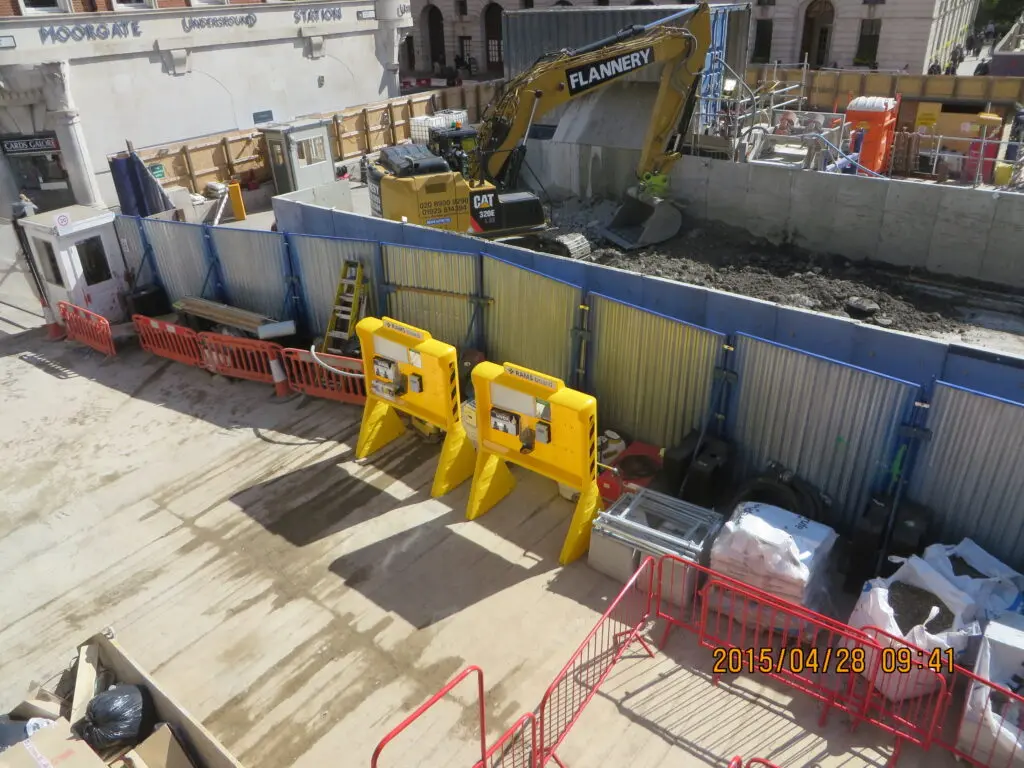
This longevity is a crucial factor for outdoor sites where safety communication infrastructure is exposed to the elements daily. For industries operating in unpredictable environments, the ability to rely on a durable board minimizes safety communication disruptions and reduces the need for costly replacements.
Maintenance is straightforward and infrequent. A simple cleaning with soap and water is sufficient to keep the board in good condition, making it an appealing option for busy site managers who already oversee multiple safety responsibilities.
Ease of Transportation and Relocation
Construction and industrial sites are dynamic, often requiring the reconfiguration of safety zones and the relocation of equipment. Traditional boards can weigh over 100 kg and require specialized lifting equipment to move, posing both logistical challenges and additional safety risks. RAMS Boards, however, are designed with portability in mind. The main board weighs only 37 kg and can be transported by two operatives without exceeding manual handling safety limits.
The modular nature of the board allows for disassembly when necessary. The supports, which can be filled with water to provide ballast, are emptied before relocation, making transportation even more manageable. Once reassembled and anchored, the board meets wind action standards (EN 1991-1-4:2005) and can withstand speeds of up to 119 km/h (74 mph). This stability ensures the board remains securely in place even under challenging weather conditions.
The ability to easily relocate safety boards helps site managers maintain high visibility of safety information as projects progress. Workers can quickly adapt to new layouts without losing access to critical safety notices, thus ensuring continuous compliance.
Cost Efficiency and Reusability
One of the biggest advantages of RAMS Boards is their reusability. Traditional safety boards are often discarded at the end of a project due to deterioration, creating waste and driving up long-term costs. RAMS Boards, by contrast, are built to be reused across multiple projects. This reduces the need for repeated investments in safety communication infrastructure, offering substantial cost savings over time.
Additionally, the high-quality design and materials contribute to fewer operational disruptions. Since the boards require minimal maintenance and are highly resistant to damage, site managers spend less time and money on repairs or replacements. Over the life of the product, this reliability helps reduce the hidden costs associated with frequent downtime or non-compliance penalties.
Improved Engagement and Safety Culture
A well-maintained, visually appealing safety board is more likely to attract the attention of workers. RAMS Boards are designed with this principle in mind, featuring a clear layout that segregates different types of information. Workers can quickly identify and access the documents they need, whether it’s emergency procedures, hazard warnings, or daily updates.
The inclusion of features like mirrors with motivational safety messages further enhances engagement. The phrase “Meet the person responsible for your safety” serves as a subtle psychological reminder to workers that safety starts with their own actions. These small yet effective design choices promote a culture of safety awareness and personal accountability.
Over time, the presence of standardized, recognizable safety boards across multiple sites can foster consistency in safety expectations. Workers who move between projects will already be familiar with the format and location of essential safety information, reducing the need for extensive orientation.
Future Trends in Site Safety Communication
As industries continue to prioritize health and safety, the evolution of site safety communication is accelerating. Emerging trends focus on improving both the delivery and accessibility of safety information through innovative technologies, eco-friendly designs, and greater integration with workplace management systems. For site managers and EHS professionals, staying ahead of these trends is key to maintaining a competitive edge while ensuring optimal safety performance.
Digital Integration and Smart Safety Boards
Technology is reshaping the way safety information is shared on worksites. Traditional safety boards are increasingly being supplemented—or even replaced—by digital features. For example, RAMS Boards and other customizable solutions can now incorporate QR codes, RFID tags, or NFC technology that workers can scan using their smartphones.
These digital features link to online databases where workers can access in-depth documents such as safety data sheets (SDS), incident reports, and training videos. This on-demand access helps overcome the physical space limitations of static boards while ensuring that workers can easily find relevant information at any time. Additionally, real-time updates through digital platforms reduce the risk of outdated notices remaining on display, a common problem with manual safety boards.
In some advanced applications, fully digital safety boards integrate with site management software to provide automated notifications about changing hazards, inspections, or scheduled safety meetings. By leveraging these tools, site managers can enhance both compliance and worker engagement through interactive, data-driven communication strategies.
Eco-Friendly and Sustainable Designs
Sustainability is becoming an increasingly important consideration in safety product design. Many industries are under pressure to reduce their environmental impact, and safety infrastructure is no exception. RAMS Boards already lead in this area by using high-density polyethylene (HDPE), a durable and eco-friendly material. This approach not only reduces waste but also aligns with corporate sustainability goals, which can improve a company’s reputation among stakeholders. In addition RAMS Boards can be recycled at the end of usage cycle.
The push for greener solutions may lead to further innovations, such as boards made from biodegradable or carbon-neutral materials. Additionally, companies are exploring ways to reduce their reliance on disposable safety signage by investing in reusable components. For example, magnetic or modular displays that can be easily reconfigured for new projects help minimize waste while maximizing the lifespan of safety infrastructure.
Augmented Reality (AR) and Virtual Safety Training
Augmented reality (AR) is gaining traction as a powerful tool for enhancing safety communication. With AR-enabled devices such as smart glasses or mobile apps, workers can view interactive overlays that provide real-time safety information as they move around the worksite. For instance, an AR app could display hazard zones, equipment safety instructions, or emergency evacuation routes directly on a worker’s screen.
This immersive technology has the potential to revolutionize safety training by offering hands-on learning experiences without the need for physical simulations. Workers can engage with virtual scenarios to practice responding to emergencies or navigating hazardous environments, improving their preparedness for real-world situations.
Although AR is still in its early stages of adoption, its potential to enhance both situational awareness and training outcomes makes it a trend worth monitoring for forward-thinking site managers and EHS teams.
Customization for Diverse Work Environments
The demand for industry-specific customization continues to grow. Safety boards are increasingly being designed to meet the unique needs of different sectors, from construction to corporate facilities. RAMS Boards exemplify this trend with their flexible configurations, which allow companies to integrate various safety tools, such as fire extinguishers, eye wash stations, and document holders, into a single unit.
This customization extends beyond physical features. Companies are seeking safety solutions that can adapt to their organizational culture and operational requirements. For example, construction firms may require boards that prioritize risk assessments and site layouts, while manufacturing plants might emphasize hazardous material protocols. Customization ensures that workers always have access to relevant safety information, improving compliance and reducing the risk of miscommunication.
Enhanced Worker Engagement and Behavioral Safety
As safety culture becomes more deeply embedded in workplace operations, companies are placing a stronger emphasis on behavioral safety. This approach focuses on changing workers’ attitudes and behaviors toward safety through consistent messaging and reinforcement. Visual communication tools, like RAMS Boards, play a crucial role in this strategy by serving as daily reminders of safety priorities.
Future developments may include more personalized safety messaging tailored to individual roles and tasks. For instance, workers could receive targeted alerts based on their current location or job assignment, reinforcing site-specific protocols in real time. Such enhancements can improve engagement and ensure that safety remains top of mind for all employees.
The Future Is Integrated and Adaptive
The future of site safety communication lies in integration and adaptability. Safety boards are evolving into multifunctional hubs that combine physical, digital, and interactive elements. By adopting these cutting-edge solutions, companies can enhance their safety performance while reducing costs and environmental impact. Site managers and EHS professionals who embrace these innovations will be better equipped to navigate the ever-changing landscape of workplace safety.
Elevating Workplace Safety Standards
Workplace safety is a dynamic and ever-evolving priority, particularly in high-risk industries like construction, manufacturing, and infrastructure development. Site managers and Environmental Health & Safety (EHS) professionals face the ongoing challenge of ensuring that safety information is clearly communicated, readily accessible, and constantly updated. Safety boards, once regarded as simple notice displays, have transformed into powerful tools for compliance, awareness, and engagement.
Modern solutions such as RAMS Boards demonstrate how innovation can elevate safety standards across various industries. By offering durable, customizable, and multifunctional designs, these boards solve key issues associated with traditional safety infrastructure. Whether it’s providing centralized emergency information, displaying updated safety notices, or integrating equipment like fire extinguishers and eye wash stations, RAMS Boards have redefined the role of safety communication tools in the workplace.
A Clear Path to Compliance and Efficiency
Compliance with safety regulations is not optional—it is a legal obligation that can carry severe consequences if neglected. Regulatory bodies such as the UK Health and Safety Executive (HSE) and their international counterparts enforce strict standards regarding the visibility and organization of safety information on work sites. RAMS Boards, with their standardized layouts and durable features, are designed to meet these expectations, simplifying audits and inspections for site managers.
Moreover, by ensuring that critical documents such as risk assessments, emergency procedures, and inspection plans are properly displayed and protected, these boards reduce the risk of non-compliance. Companies that prioritize these safety measures often experience fewer accidents, legal issues, and operational disruptions, ultimately improving their overall efficiency and reputation.
Improved Safety Culture and Worker Engagement
An effective safety culture goes beyond regulations and policies—it requires active participation from all workers. Visual communication is a vital part of reinforcing this culture, and well-designed safety boards play a central role. Workers who encounter clear, organized, and regularly updated safety information are more likely to engage with the material and adhere to protocols. This engagement helps create a shared sense of responsibility for workplace safety.
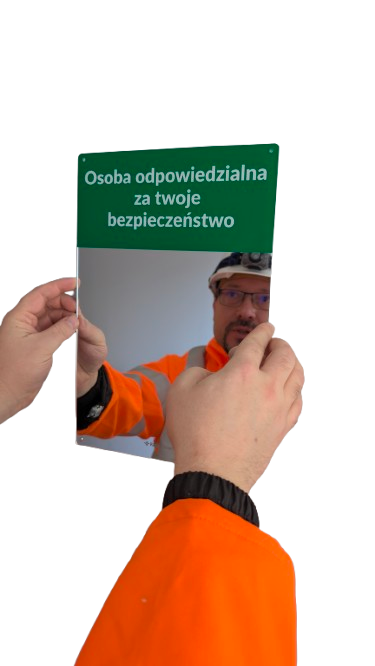
RAMS Boards enhance this engagement through subtle design elements, such as the integrated mirror that reminds workers to “meet the person responsible for your safety.” These psychological cues reinforce the idea that safety is a personal responsibility, prompting workers to think about their own actions and choices on site.
Over time, such consistent messaging can lead to behavioural changes that result in a safer, more accountable workforce.
Sustainability and Long-Term Value
Sustainability is becoming an increasingly important factor in workplace operations. Many companies are under pressure to reduce their carbon footprint, waste, and reliance on disposable materials. RAMS Boards contribute to these goals by using HDPE, a durable and eco-friendly material. HDPE can be recycled at the end of the usage cycle. Unlike traditional plywood and timber boards, which often end up in landfills after a single project, RAMS Boards are designed for long-term use and reuse across multiple sites.
This durability and reusability also offer significant cost savings. While the initial investment may be higher than that of a temporary board, the long-term return on investment is substantial. Companies that adopt these boards can reduce ongoing maintenance and replacement costs, improving their bottom line while contributing to environmental sustainability initiatives.
Future-Proofing Safety Communication
The future of safety communication lies in adaptability and integration. Emerging technologies such as digital updates, augmented reality (AR), and mobile accessibility will continue to shape how companies deliver safety information. RAMS Boards are already positioned to support this evolution, with the potential to incorporate features like QR codes, RFID tags, and interactive updates. This forward-thinking approach ensures that companies can stay ahead of both technological advancements and regulatory changes.
For site managers and EHS professionals, embracing these innovations provides a competitive advantage. Workers are more likely to trust and comply with safety protocols when they are presented through modern, user-friendly tools. Additionally, integrated solutions help streamline operations by reducing redundancies and improving the overall flow of information on site.
As industries strive to improve safety performance and meet evolving compliance requirements, investing in advanced safety communication solutions is no longer optional—it is essential. Products like RAMS Boards offer a scalable, adaptable, and highly effective way to achieve these goals. By adopting these solutions, companies can protect their workforce, minimize risks, and foster a culture of continuous safety improvement.
For site managers and EHS professionals looking to elevate their safety programs, now is the time to take action. Explore the latest innovations in safety communication, assess your current infrastructure, and implement tools that will keep your sites compliant, efficient, and safe. By prioritizing these measures, you not only protect your employees but also position your organization for long-term success in today’s competitive and safety-conscious world.
Gary Reilly, Project Manager, Lorclon Ltd: “We have been impressed with its quality and time/cost saving that we have decided to roll it out across all our sites.”
(Google reviews) Andrew Elliott: “Their online store is user-friendly, and the product descriptions are detailed and accurate.”
What are RAMS Boards, and how do they improve workplace safety?
RAMS Boards are modular, durable information boards designed to act as multifunctional safety hubs in construction, industrial, and other high-risk environments. They display essential safety information, such as risk assessments, emergency procedures, and contact numbers, and include integrated features like document holders, magnetic whiteboards, and safety equipment stands. These features ensure that safety information is always accessible and organized, helping to reduce accidents and improve compliance with safety regulations.
How do RAMS Boards compare to traditional safety boards made from plywood or timber?
Unlike traditional boards, RAMS Boards are made from recycled high-density polyethylene (HDPE), which is weather-resistant, durable, and eco-friendly. Traditional boards deteriorate quickly under environmental stress and are difficult to relocate due to their weight. In contrast, RAMS Boards are lightweight, portable, and designed to withstand harsh conditions without regular maintenance, offering significant cost savings and improved efficiency over time.
Can RAMS Boards be customized to meet site-specific safety needs?
Yes, RAMS Boards are highly customizable. They can be configured to include features such as fire extinguisher stands, eye wash stations, and tailored document holders. The layout can be adapted to prioritize information relevant to specific industries, such as construction or manufacturing. Additionally, the boards can incorporate digital elements like QR codes or NFC tags to provide instant access to detailed safety procedures via mobile devices.
How do RAMS Boards help with regulatory compliance?
RAMS Boards are designed to meet regulatory standards by providing a centralized space for displaying essential safety documents, including risk assessments, emergency procedures, and inspection records. Their durability ensures that these documents remain protected and legible even in adverse conditions. By maintaining organized and visible safety information, RAMS Boards facilitate smoother compliance inspections and audits, reducing the risk of penalties for non-compliance.
Are RAMS Boards suitable for dynamic worksites where safety zones frequently change?
Yes, RAMS Boards are ideal for dynamic worksites. Their modular design allows for easy disassembly and relocation. The supports can be filled with ballast (e.g., water) for stability and emptied when the board needs to be moved. This portability ensures that safety information remains visible and accessible as work zones shift, enhancing both safety and operational flexibility.
What role do RAMS Boards play in promoting a safety culture?
RAMS Boards contribute to building a proactive safety culture by making safety information highly visible and engaging. Design elements such as a motivational mirror with the message "Meet the person responsible for your safety" encourage workers to take personal responsibility for their actions. Additionally, the clear and organized presentation of documents reduces confusion, helping workers stay informed and motivated to follow safety protocols. Over time, this consistent communication fosters greater safety awareness and behavioral improvements across the workforce.
